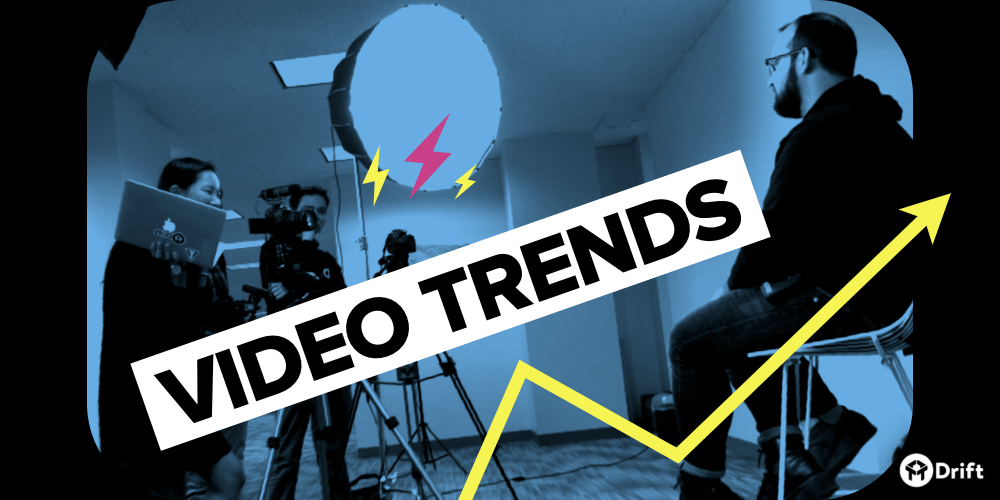
Editor’s Note: The following is adapted from Chapter 12: How Sales Teams Can Create a Better Buying Experience with Real-Time Conversations from the book Conversational Marketing: How the World’s Fastest Growing Companies Use Chatbots to Generate Leads 24/7/365 (and How You Can Too).
This book, written by Drift CEO, David Cancel, and VP of Marketing, Dave Gerhardt, forms the basis for Conversational Marketing as a practice. And shares insider strategies for implementing Conversational Marketing in a rapidly evolving sales and marketing landscape. You can order your copy of Conversational Marketing today here.
Read on more insights from chapter twelve ?
—
It’s time for salespeople to face the facts: The days of the “hard sell” are over. In a world where product information is freely available, and where people have come to expect real-time responses from businesses as the norm, and where owning the demand for a product or service has become more important than owning the supply, it’s clear that the traditional sales process has been rendered obsolete. Today, helping is the new selling.
Think about it: Today, if you lock up white papers and other resources behind lead capture forms, potential buyers can simply go look for that information somewhere else (like on a competitor’s website) instead of wasting time filling out your form. Today, if potential buyers try to get in touch with your sales team and you force them to wait weeks, days, or hours before someone actually follows up, it’s very likely those potential buyers are going to slip away (and end up turning to a competitor who responds to their inquiries in real time).
Over the past few years, there’s been a growing disconnect between the experiences sales teams have traditionally been providing and the experiences modern buyers expect. And this is especially the case in the world of B2B sales.
Today, most B2B sales teams are putting B2B buyers through an experience that bears no resemblance to the buying experiences those buyers are having elsewhere in their lives as consumers. And as former Forrester analyst Andy Hoar once explained on an episode of Forrester’s What It Means podcast, people are both aware of—and turned off by—how inferior today’s B2B buying experience is when compared to the incredible B2C (business-to-consumer) buying experience they’ve grown accustomed to. As Hoar explained:
“It’s not as though you have a B2C consumer experience that blows you away on Amazon, or Nordstrom, or Sephora, or Charles Schwab, or wherever you’re going to go, and then, all of the sudden, go to work and say, ’Well, now I expect a much worse customer experience, and I’m happy with that.’”
The bottom line: Today’s B2B buyers expect better, which means as a salesperson, you can no longer rely on the traditional B2B sales playbook. The most successful salespeople of this new sales paradigm—a paradigm where customers have all the power—won’t be the salespeople who doggedly pursue and pressure people into buying. Instead, the most successful salespeople will be the ones who guide customers through the buying process, making themselves available to answer questions every step of the way. Instead of “Always be closing,” the sales mantra of the future is “Always be helping.”
To that end, it’s important to recognize that for some sales conversations, you’re inevitably going to need to switch over to a different, less traditional communication channel before you’re able to get someone to a “yes.”
Traditionally, the phone has been the communication channel of choice when it comes to closing new customers. But today, making a video call is the superior option. Video calls allow a potential buyer to both hear your voice and read your body language (and vice versa), which helps make the conversation feel more personal and can help you forge a stronger connection. People react strongly to seeing other people’s faces. It’s something we’re all hardwired for. That’s why when you’re using messaging, you should use a photo of yourself as your messaging avatar, and that’s also why you should use video calls in the event that you need to “escalate” a conversation to a different channel in order to make a sale.
The best part: You can switch from a messaging conversation over to a video call in a matter of seconds. After starting a meeting in whatever video conferencing tool you’re using, you can simply drop a link to that meeting in your messaging conversation. One click later and your potential buyer will be able to chat with you “face-to-face,” and you’ll be in the perfect position to close the deal.
—
Sorry to cut you off here, but we wanted to give you a taste of the twelfth chapter of Conversational Marketing: How the World’s Fastest Growing Companies Use Chatbots to Generate Leads 24/7/365 (and How You Can Too), available for order now! Over the next few months, we’ll be dropping more chapters here on the blog.
Can’t wait? You can order your copy today here.







